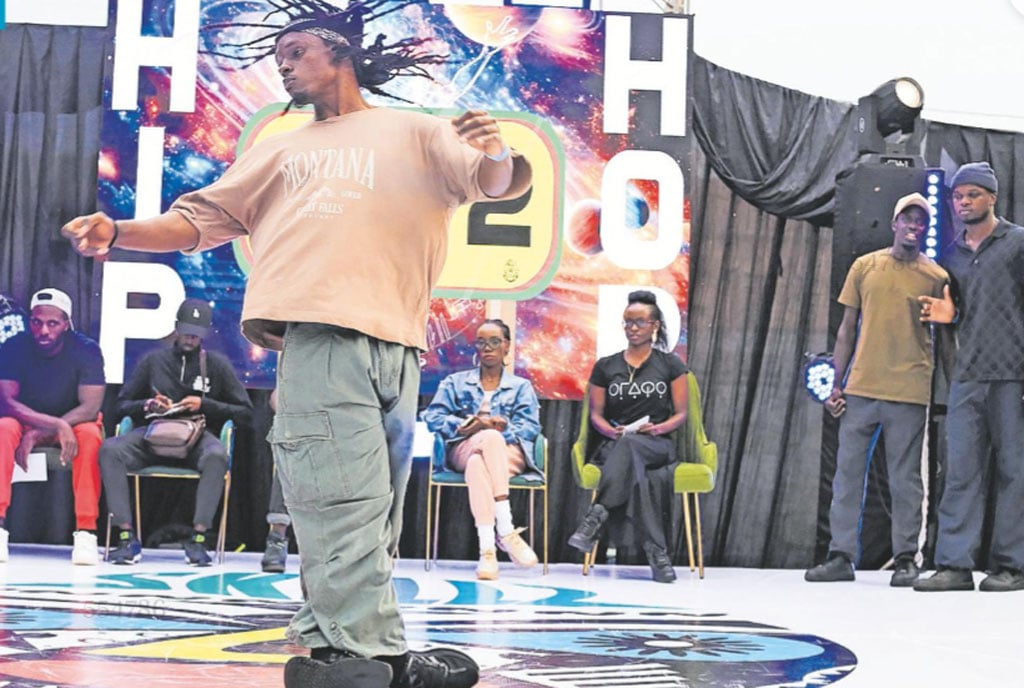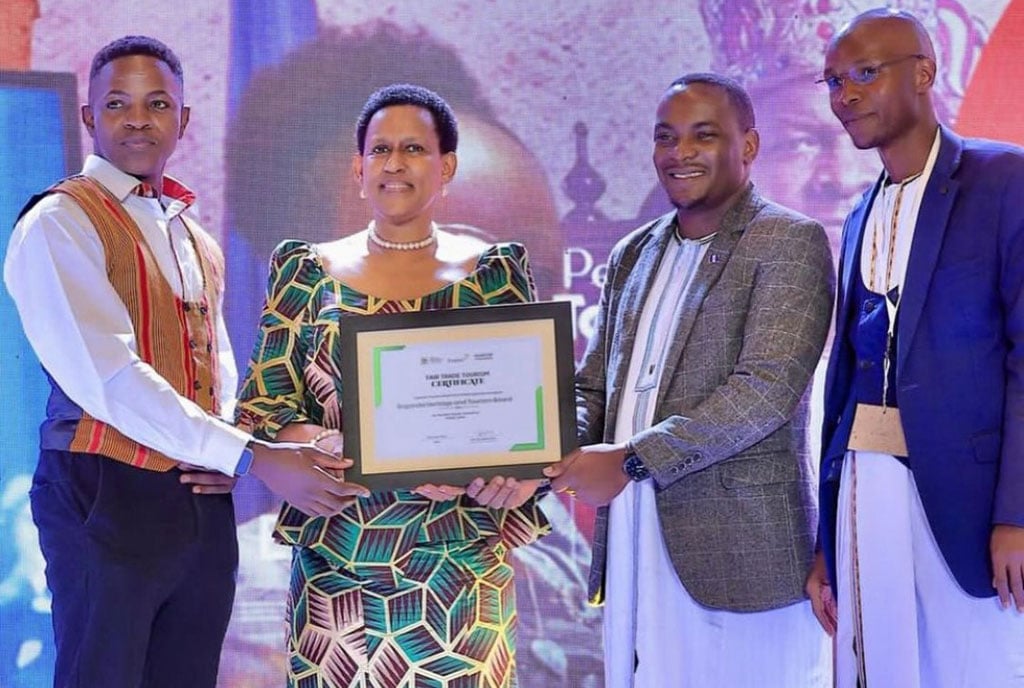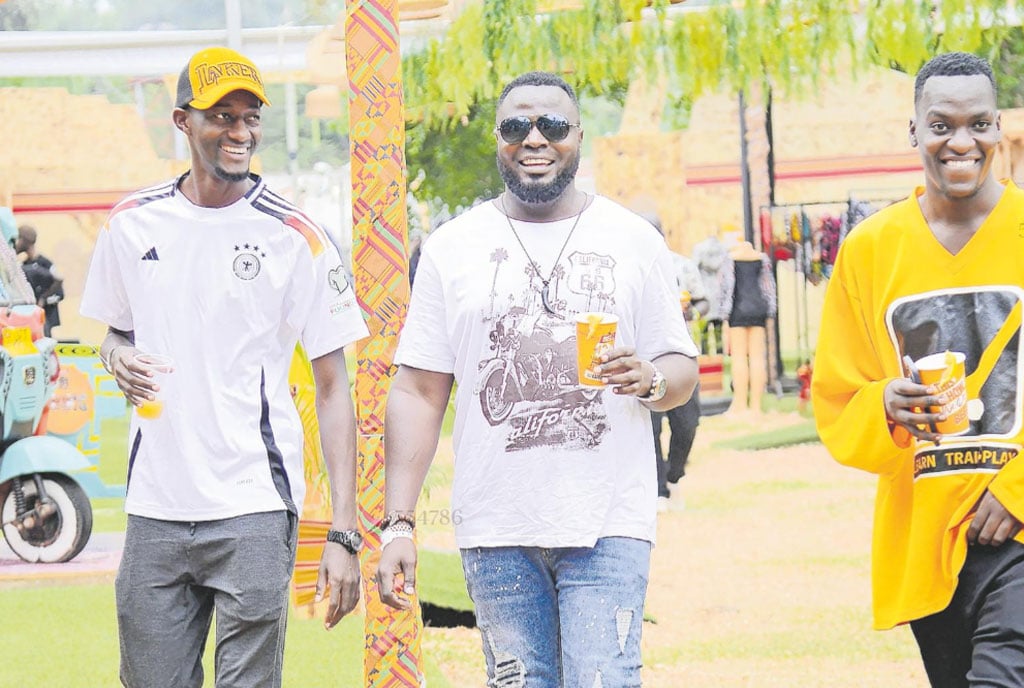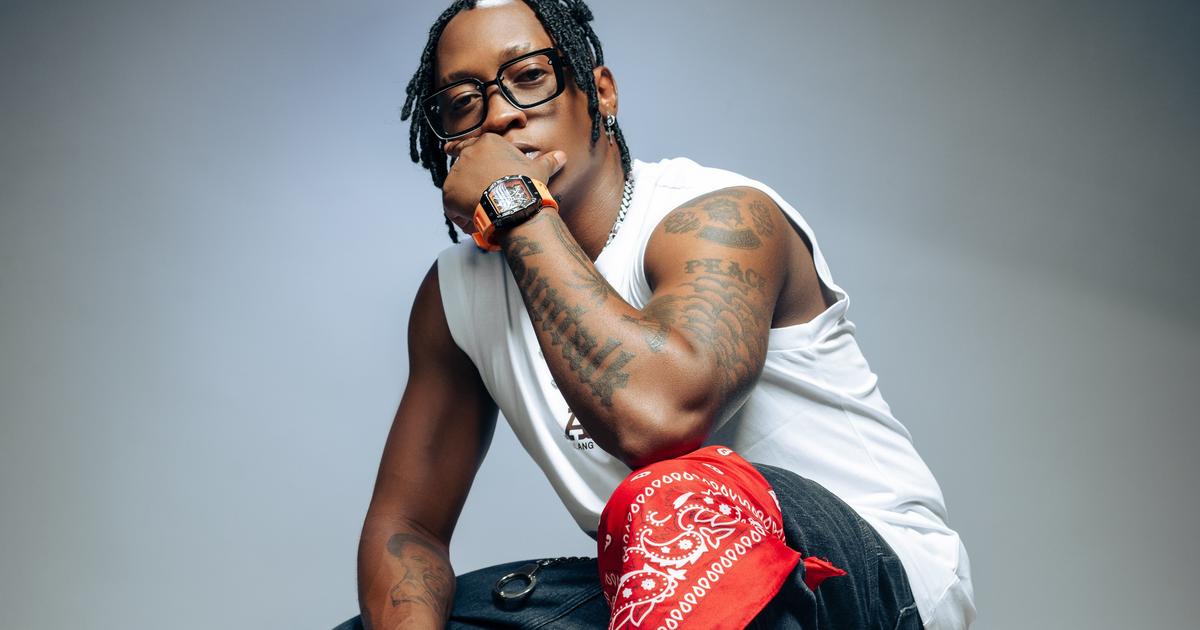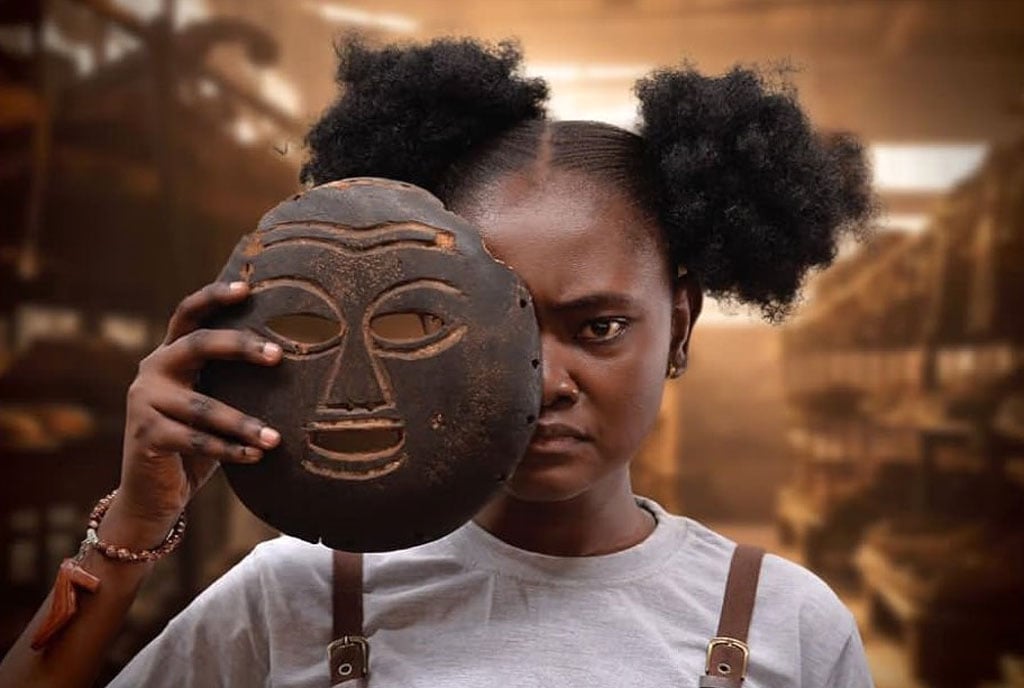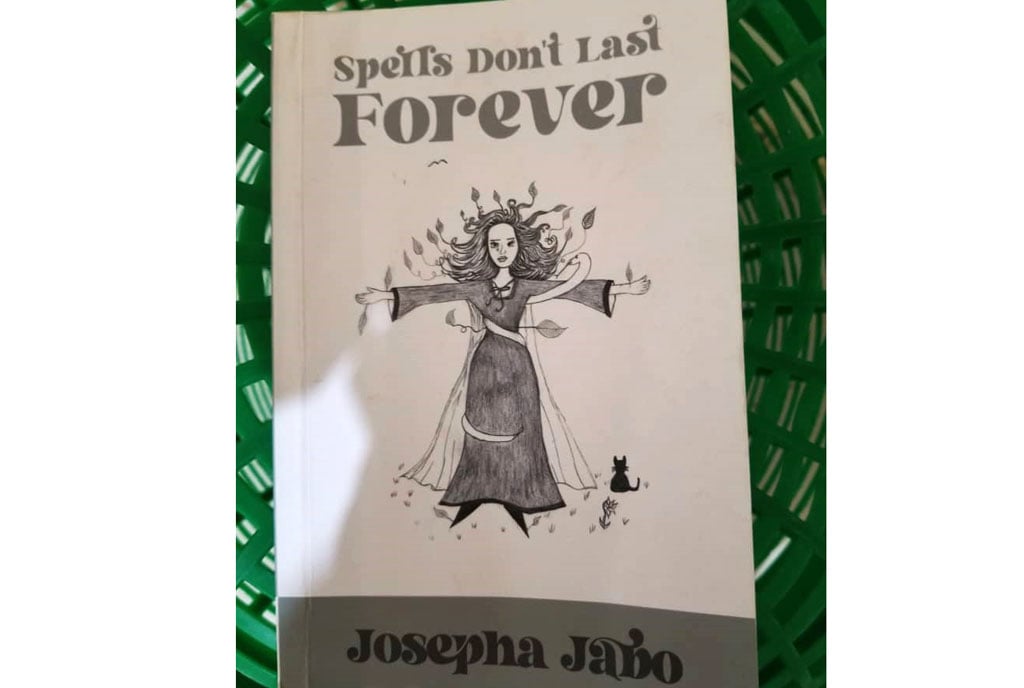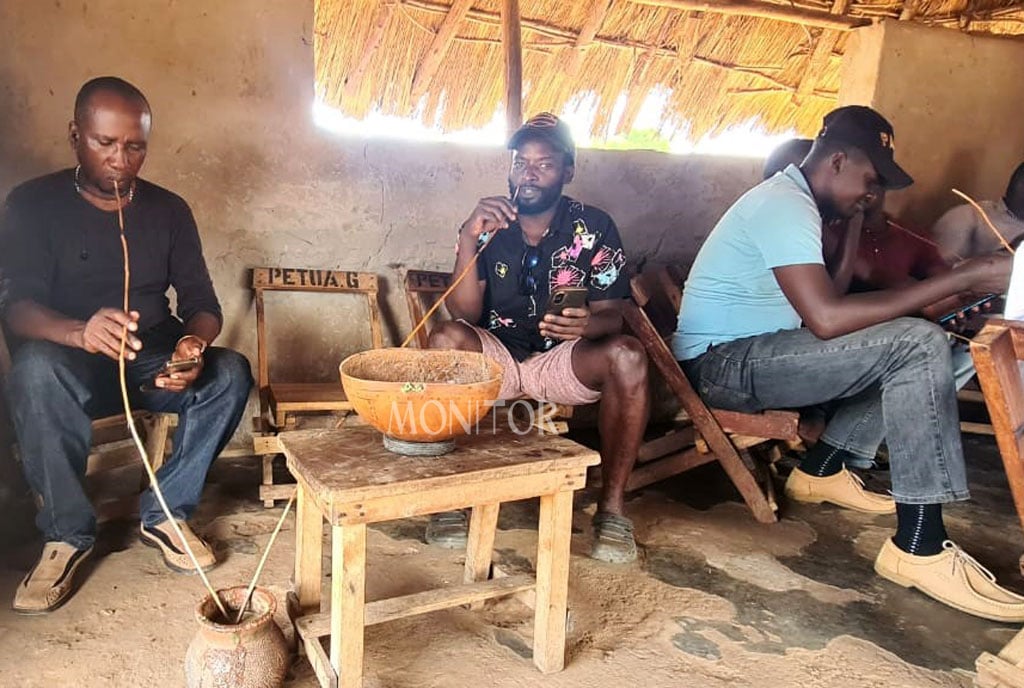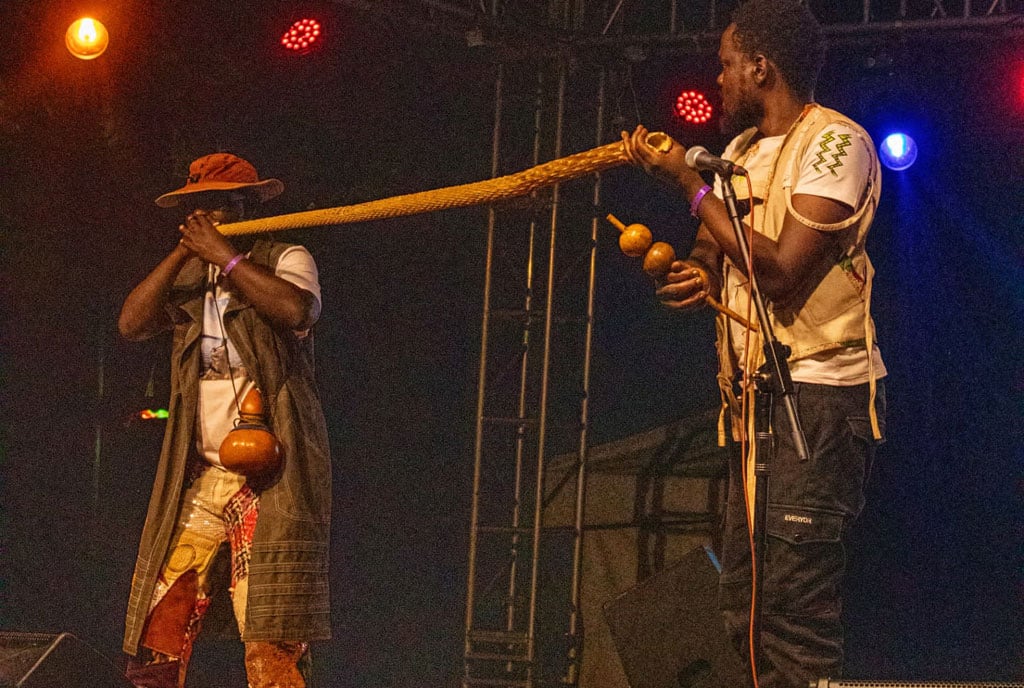
Haka Mukiga (L) playing a flute as he introduces Kiga-piano to his fans. PHOTO | ANDREW BAGALA
On Friday, the 13th edition of the Pearl Rhythm Festival started at the National Theatre. The two-day event that promotes and conserves Ugandan sounds and heritage, also doubled as a launch of the Pearl Rhythm Art Archive, a virtual platform where instruments and artefacts that are becoming extinct have been documented. More like a virtual museum.
The event was divided between performances and the conference; the panel discussions or conferences took place on Friday, while the performances took place on Saturday evening.
It is the performances that most people were waiting for and by 3pm on Saturday, there was a buzz at the National Theatre Gardens, where the festival took place.
Most of the people around at the time were indulging in art; some were dancing with the drummers of Tontoma Poetry Jazz, the first performers of the day.
They played different kinds of drums in what they termed as an open jam drum session. All you had to do was follow your own rhythm, and somehow, the sound would take its own course.
But performers started hitting the stage at about 7pm. Essie, the lead singer of the popular Aka Dope Band, was the first artist on stage. She was introduced as Essie Omweshongozi, and unlike the songs she does with Aka Dope, these were a fusion of R&B with traditional instruments.
She engaged her audience even when many did not know her songs. They danced to ekitagururo.
Essie, Charles Obina, and Haka Mukiga were a revelation at the festival, where they both had their first start a few years ago.
Haka Mukiga has for years been more of a singer backed by his guitar. He has performed at festivals, with the last being Feted De La Musique, or World Music Day in 2018.
He left the scene and partly relocated to Kigezi. He added on the already long list of instruments he used to play, researched a number of those getting extinct, and somehow rebranded himself into a conservation artiste, probably the first.
During his performance at Pearl Rhythm, he showed up with a DJ and a number of instruments that he played in turns.
He was also giving stories behind the different instruments, where they are from, and their place in Kigezi’s history.
Part of the instruments was the harmonica. It is not from the Bakiga background- it is a French harp or mouth organ he says was given to him by a friend from South Africa after seeing his interview on YouTube.
Other instruments were the Mulindi flute, an original design of his, named after his company, Mulindi Bantu Music, and the izamba, another endangered instrument whose players are also becoming rare each day that goes by.

The izamba was initially played by clan heads, society heads, and those in security, such as soldiers. “It was played to alert people; a different izamba sound was played for a different purpose. Some people played izamba after completing construction of a boat and invited people to celebrate,” Haka says.
As a conservation artist, he believes conversations about the earth and music’s role in protecting it should be had now more than ever.
However, he notes that music and artists have not found their way to tables, where these conversations take place because of a number of factors.
Haka Mukiga’s sound has always been stripped down, minimalistic in nature; a flute or bowlyre and his voice. It is something you can listen to and appreciate. Yet when he showed up for Pearl Rhythm, he said he has since invented a new genre—amashungezi.
The music gets its name from the amashungezi drum, an endangered music instrument made out of a pot covered in animal skin and banana fibres. Haka says the sound of amashungezi is not so different from the log drum of Amapiano.
The log drum is thought to be the quintessential defining element of Amapiano music. Based on a real instrument, in Amapiano, the log drum is a hybrid tone somewhere between a kick drum, 808, synth bass and actual log drum percussion. The log drum creates the bass lines and momentum for the songs.
“That sound fits many genres, including Hip hop. It is what makes Amashungezi the heart of Kiga-piano,” he says.
On Saturday, Mukiga introduced festival goers to Amashungezi, or the Kiga-piano, played on an already recorded drum sound mixed with his flute and other local instruments.
Besides Haka Mukiga, Charles Obina’s presented his fusion of Soukous with his 17-stringed Adungu and a thumb piano.
